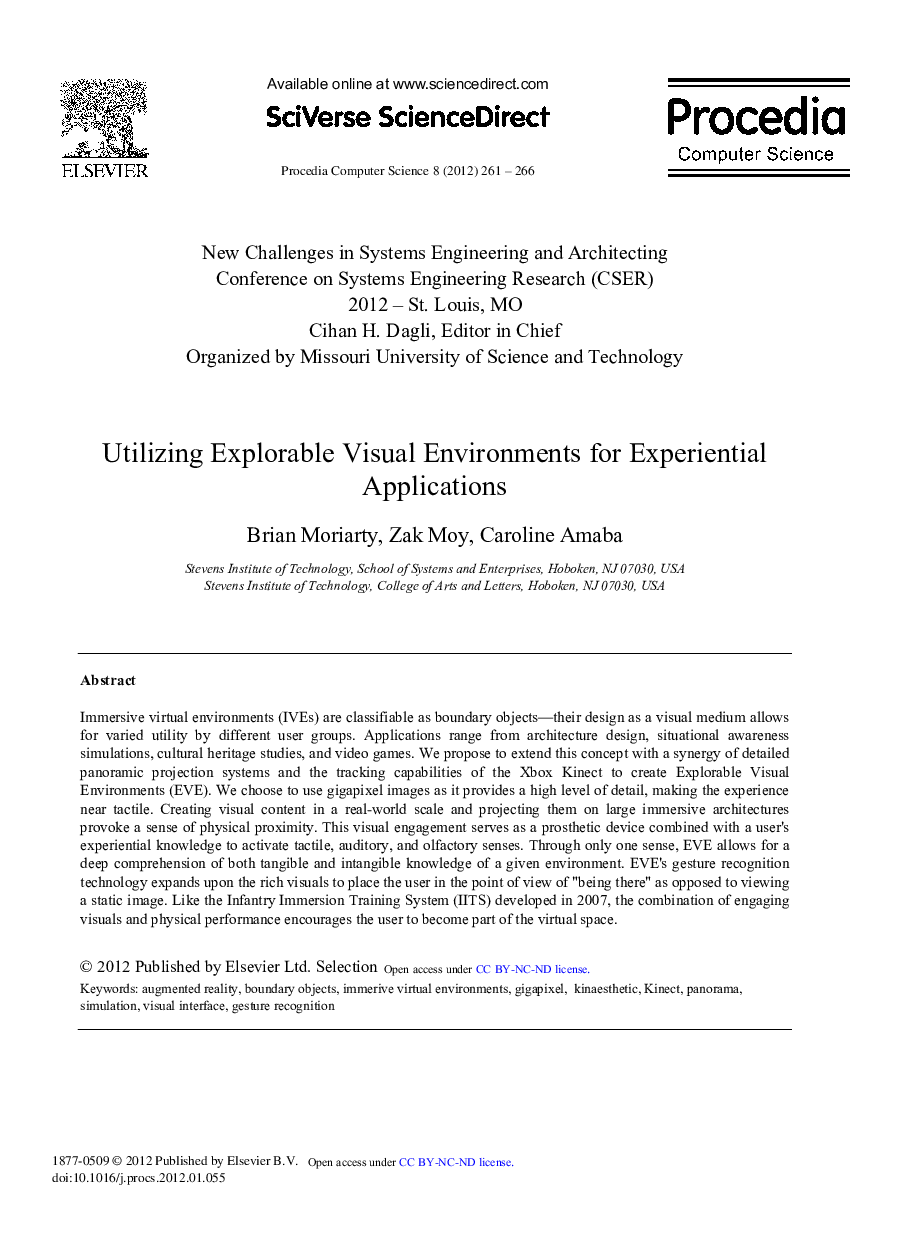| Article ID | Journal | Published Year | Pages | File Type |
|---|---|---|---|---|
| 488093 | Procedia Computer Science | 2012 | 6 Pages |
Immersive virtual environments (IVEs) are classifiable as boundary objects-their design as a visual medium allows for varied utility by different user groups. Applications range from architecture design, situational awareness simulations, cultural heritage studies, and video games. We propose to extend this concept with a synergy of detailed panoramic projection systems and the tracking capabilities of the Xbox Kinect to create Explorable Visual Environments (EVE). We choose to use gigapixel images as it provides a high level of detail, making the experience near tactile. Creating visual content in a real-world scale and projecting them on large immersive architectures provoke a sense of physical proximity. This visual engagement serves as a prosthetic device combined with a user's experiential knowledge to activate tactile, auditory, and olfactory senses. Through only one sense, EVE allows for a deep comprehension of both tangible and intangible knowledge of a given environment. EVE's gesture recognition technology expands upon the rich visuals to place the user in the point of view of “being there” as opposed to viewing a static image. Like the Infantry Immersion Training System (IITS) developed in 2007, the combination of engaging visuals and physical performance encourages the user to become part of the virtual space.
